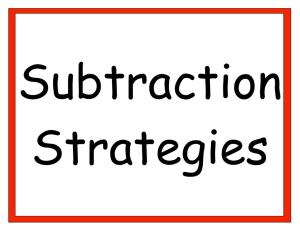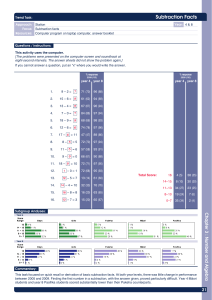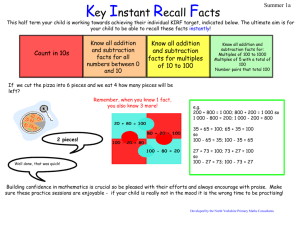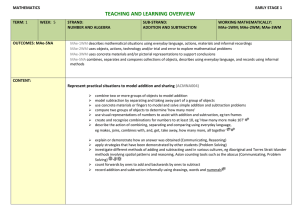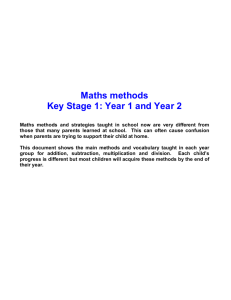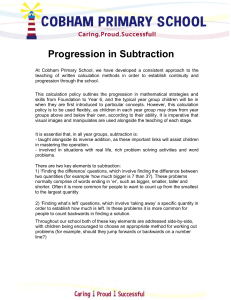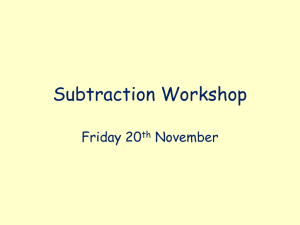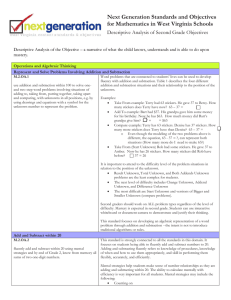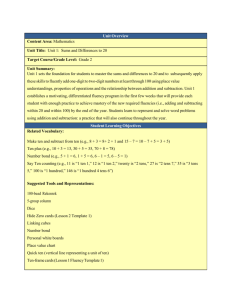Subtraction. - Geoffrey Field Junior School
advertisement
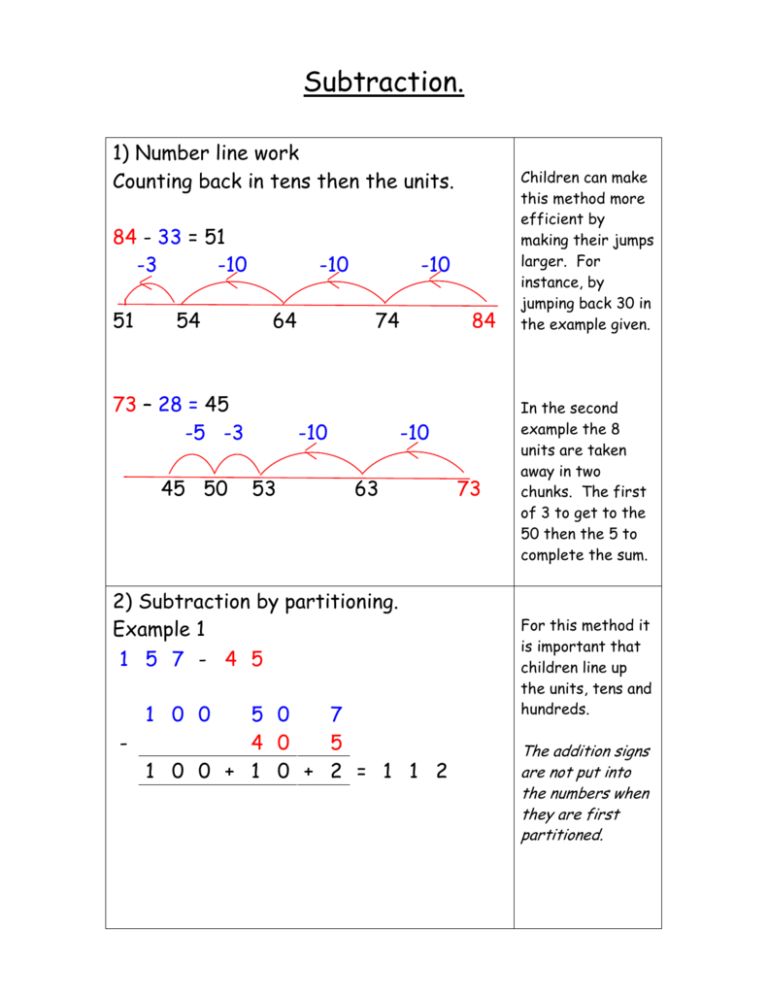
Subtraction. 1) Number line work Counting back in tens then the units. 84 - 33 = 51 -3 -10 51 54 -10 64 73 – 28 = 45 -5 -3 45 50 -10 74 -10 53 84 -10 63 2) Subtraction by partitioning. Example 1 1 5 7 - 4 5 1 0 0 5 0 7 4 0 5 1 0 0 + 1 0 + 2 = 1 1 2 73 Children can make this method more efficient by making their jumps larger. For instance, by jumping back 30 in the example given. In the second example the 8 units are taken away in two chunks. The first of 3 to get to the 50 then the 5 to complete the sum. For this method it is important that children line up the units, tens and hundreds. The addition signs are not put into the numbers when they are first partitioned. Example 2 7 7 9 - 2 5 6 7 0 0 7 0 9 - 2 0 0 5 0 6 5 0 0 + 2 0 + 3 = 5 2 3 3) Subtraction by partitioning involving exchanging of tens and hundreds. Example 1. 8 5 4 - 2 2 8 4 0 8 0 0 5 0 1 4 - 2 0 0 2 0 8 6 0 0 + 2 0 + 6 = 6 2 6 Example 2 9 2 3 - 6 6 7 8 0 0 1 1 0 9 0 0 2 0 1 3 - 6 0 0 6 0 7 2 0 0 + 5 0 + 6 = 2 5 6 Children should be encouraged to subtract the units first as this will prepare them for column methods of subtraction. The sum is ‘set up’ before any subtraction is carried out. In example 1 the units are the problem. The 50 is partitioned into 40 + 10 and the 10 is then exchanged into the units’ column. In example 2, both the units and the tens are problems. All the exchanging is done, starting with the units, before the subtraction is carried out. 4) Standard written method Example 1 6 5 3 - 2 2 8 4 6 5 13 - 2 2 8 4 2 5 Example 2 3 4 3 8 2 - 8 5 2 13 3 4 13 8 8 5 2 2 5 8 6 As with the previous method, all the exchanging is carried out and the sum is ‘set up’, before any subtraction takes place.

